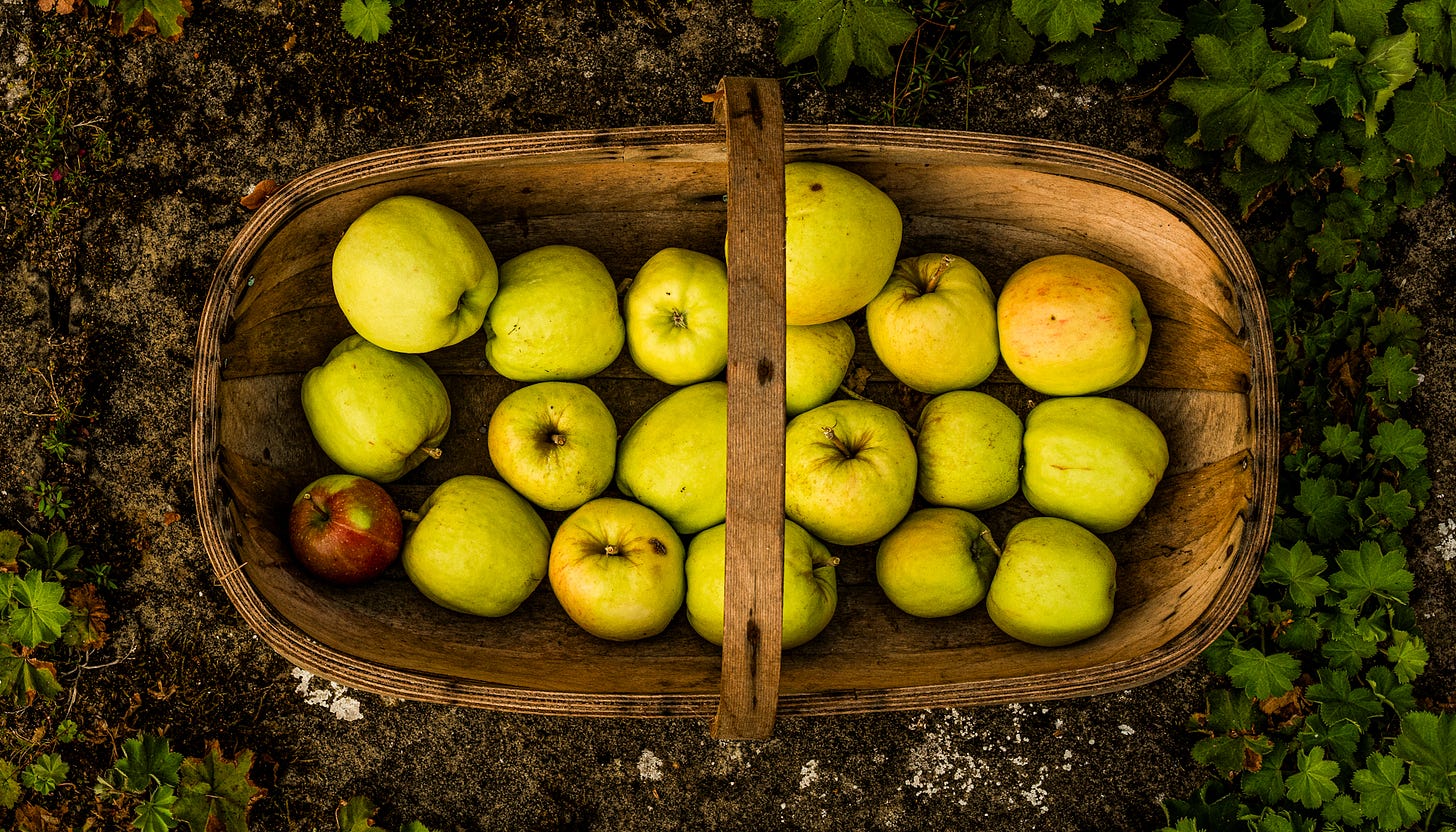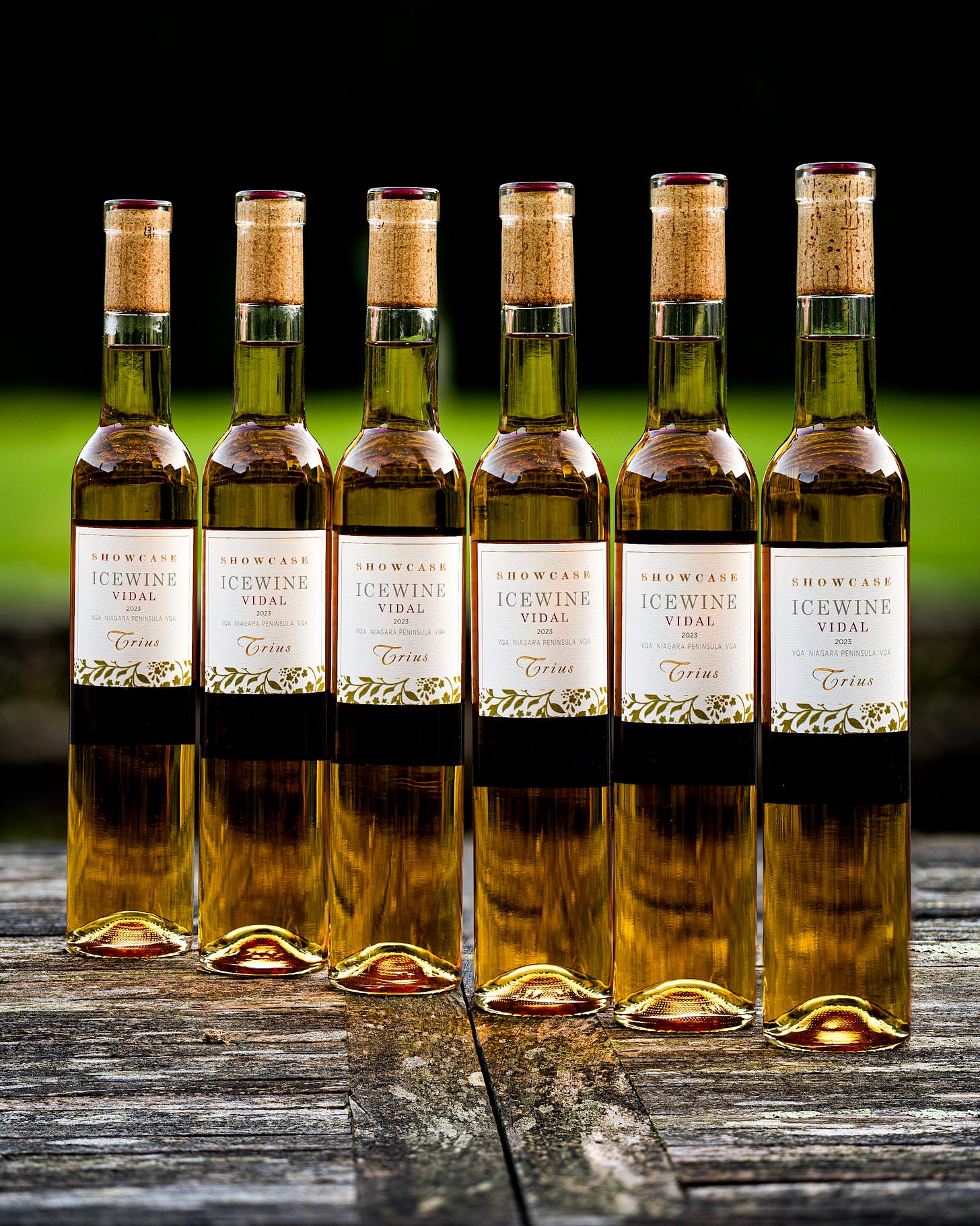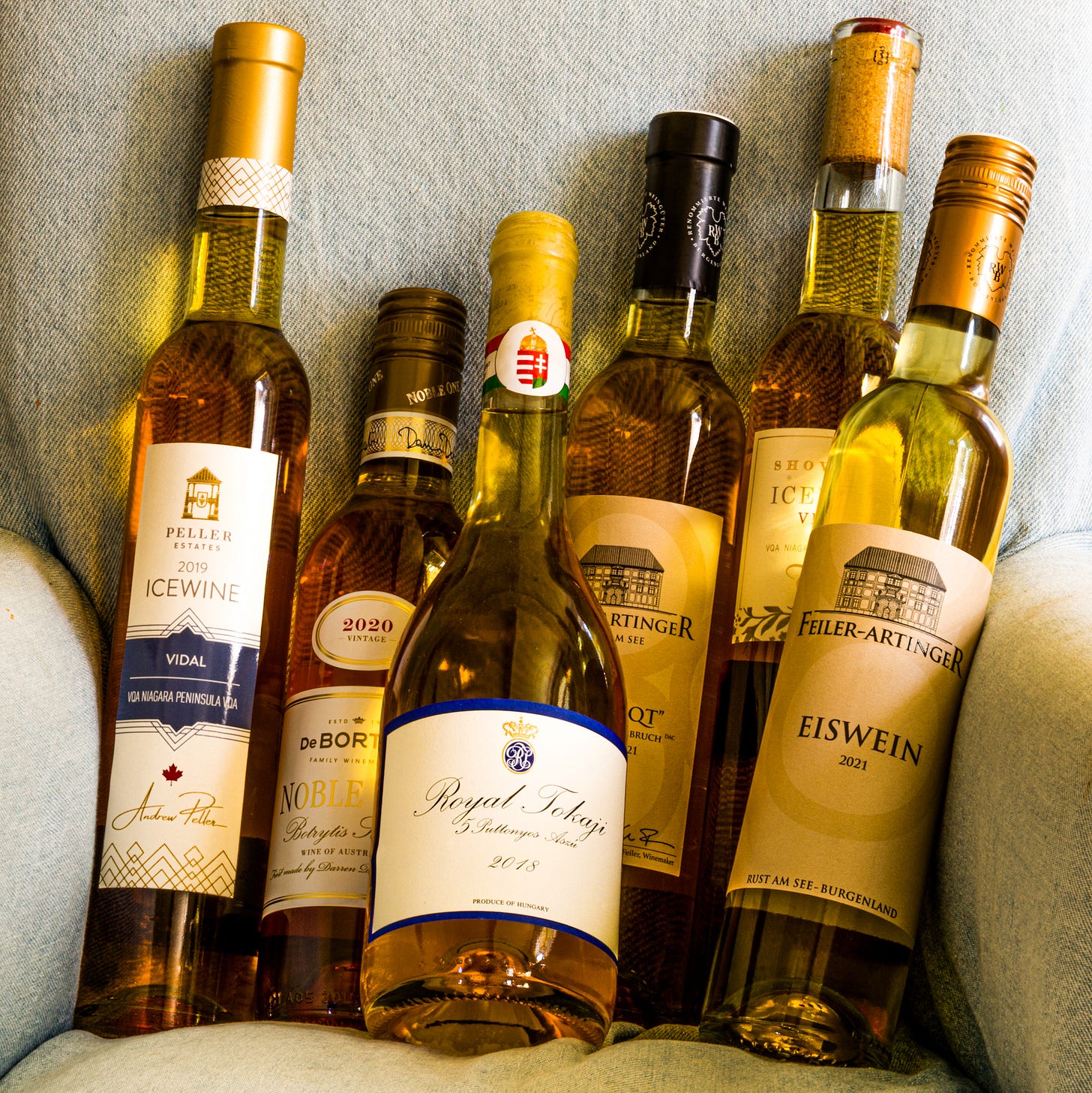Apple Crumble Season
… and a wine to match, from Canada …
With apples falling from trees across many gardens, then what better pudding to finish an autumnal Sunday lunch than apple crumble. However, what wine to serve with this classic dish?
Exploring options outside the traditional regions for pudding wines, and offering significantly better value, a collection of wines from Australia, Austria, Canada, and Hungary were assembled for a tasting panel to assess.
There was one very clear winner: an icewine from Canada.
It’s unclear when recipes for apple crumble started appearing. It seems the first reference for a ‘apple crumble’ is from an American lady, Isabel Ely Lord, in her book ‘Everybody’s Cook Book’, published in 1924. However, Mrs Beeton’s ‘Book of Household Management’, published in October 1861 has two dishes that could today be referred to as an apple crumble, but called ‘apple pudding, baked’ and ‘bachelor’s pudding’.
What is clear is that recipes for this dish became popular in England during the Second World War. With the classical ingredients for pies in short supply - butter, lard, and sugar - combined with the scarcity of imported fruits, then apples that were locally grown and in a plentiful supply, were ideal for making economical and comforting desserts with a strudel-like topping, stretched with flour or even oats.
Icewine is a delicious but rare commodity. The one listed below comes from Canada, but the process of production was first observed in Germany in 1794, but undocumented. On 11th February 1830, the first documented harvest was recorded at Dromersheim in Germany, from the vintage in 1829.
The process of consistently producing icewine needs a region with cold winters: Germany, Austria, and Canada fit that brief. The technique is relatively simple, but immensely time consuming. The grapes are deliberately left on the vine long after the general harvest has been collected. When temperatures are –7°C, or colder, the water within the must of the grape freezes. Harvesting often takes place in the early morning to ensure the grapes remain frozen. Hand-harvesting as well as mechanical are permitted.
The grapes are then pressed while still frozen. The frozen component of mainly water remains in the press, while the super-concentrated juice runs off. It has intense levels of sugar, and the subsequent fermentation can take months to complete. The yeasts in this concoction eventually throw in the towel and stop converting when they reach a relatively low alcoholic strength but retain a significant proportion of residual sugar. Not too surprisingly, yields are small.
Canada has emerged as the most reliable and largest producer of this style of wine. Given climate change, it still has winters that can consistently create the conditions for this rare item to be produced, unlike Germany and Austria. Germany and Austria have historically used Riesling for eiswein, alongside Grüner Veltliner, Silvaner, and other varietals. Canada has primarily focused on the Vidal Blanc grape.
Trius Vidal Icewine 2023, Canada
There are tropical fruit flavours of mango, lychee and pineapple on the nose and palate. Candied fruits with length, complexity and immensely adorable drinkability. Touches of lemon marmalade, intense but perfectly balanced acidity, and with lashings of custard over the apple crumble, this would finish a lunch to perfection. Make sure you have enough bottles for the second, the third … glasses. Guests might, unexpectedly, demonstrate a strong liking for this creation. From a quality, value-for-money perspective, this is exceptional. (Although Waitrose’s web site states this is a 2015 vintage, it is 2023.)
£26.00 - Half-bottle - Waitrose




